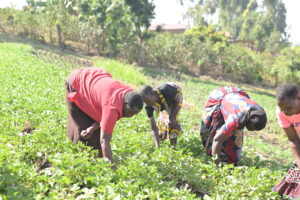Women must ultimately be at the high table to address climate change
Climate change affects everyone-but it doesn’t affect everyone equally. Inequities and marginalization exist, linked to gender, ethnicity, low income and other economic and social factors, exacerbate vulnerability to climate change.
In many societies, for example, women are responsible for household energy, food, water and care for the young and elderly.
Particularly in developing countries, the consequences of climate change can increase the burden for women and girls. For example, causing them to travel further to obtain daily supplies, leaving less time for paid work, leisure, rest and potentially exposing them to greater risk to their personal safety.
In seeking solutions, and as part of the UN Climate Action and Paris Agreement, it is becoming mandatory to involve women in seeking climate change solutions and addressing realities that the world is facing as a result.
Women and girls comprise half of the world’s population and leaving them out of decision making automatically leaves out half of the planet.
Additionally, women make up nearly half of the agricultural labor force in developing countries- especially as subsistent farmers providing food for families. Empowering these women with resources and appropriate technology can increase their agricultural yields by 20-30%.
This not only improves total agricultural output by 2.5-4% but can also reduce world hunger by 12-17% according to the UN. Empowering women in agriculture can also have positive impact on climate adaptation.

Most communities have been found to have women as first responders to natural disasters, leaders in disaster risk reduction and contribute a lot to post recovery by addressing recovery needs of their families and strengthening community building.
Involving women in community planning and disaster response efforts can build stronger, more resilient communities that are better equipped to face the challenges of climate change.
Most countries and governments under the UN Framework Convention on Climate Change (UNNFCCC) agreed on the Gender Action Plan to address full, equal and meaningful participation of women in the international climate process and to ensure a prominent role for women in decision making and in climate action.
What remains is for countries to be deliberate in how they seek to achieve gender parity in local, national and international climate policy and decision making roles.
Investing in women and girls has far-reaching benefits for communities and countries.
Research shows that, countries with high representation of women in parliament are more likely to ratify international environmental treaties.
Furthermore; Investing in gender equality and women’s empowerment has greater positive impacts, including environmental conservation, poverty reduction, and achieving SDGs in general.
By tackling climate change with a gender lens, women’s rights and greater gender equality are promoted.
(Credit information and statistics: UNFCCC- unfccc.int)
